Submitted by
Oppenheim Architecture Designs New Mountain Resort Embedded Into Rocks In Saudi Arabia
teaser3-1--2--3--4--5-.jpg Architecture News - Oct 01, 2021 - 11:38 5680 views
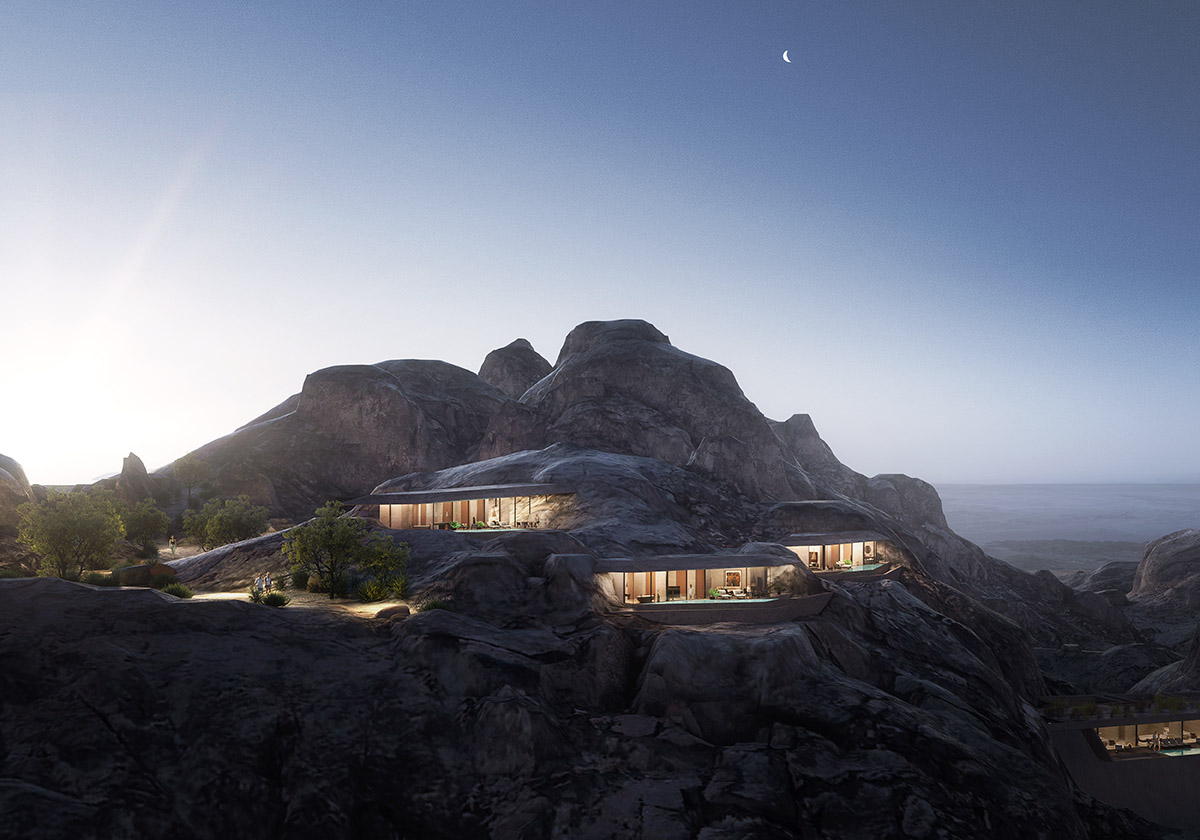
Miami and Basel-based architecture firm Oppenheim Architecture has unveiled design for a new mountain resort embedded into rocks in Saudi Arabia's untouched beauty.
Called Desert Rock, the new resort is developed as part of The Red Sea Project (TRSDC) development, which will form a chain of 90 inhabitant islands that are being developed along Saudi Arabia’s west coast.
Oppenheim's Desert Rock project, consisting of 48 villas and 12 hotel rooms, will blend architecture with nature as hotel and facilities that will be built into the stunning Saudi mountain landscape.
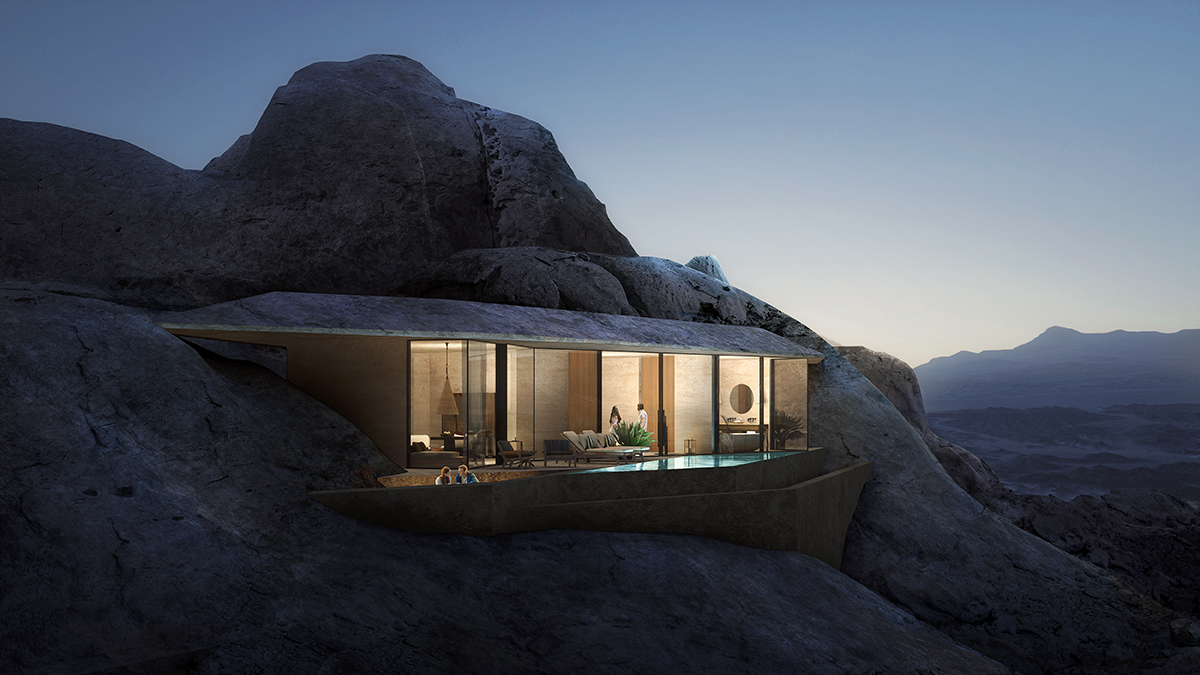
Image © Luxigon
Site preparation works at site have commenced, and construction began in July 2021. The Red Sea Project has already passed significant milestones on the destination and work is on track to welcome the first guests by the end of 2022, when the first hotels will open. Phase One, which includes 16 hotels in total, will be completed in 2023.
"We wanted to create a destination that allows guests to experience Saudi Arabia’s untouched beauty. Desert Rock will provide guests with uninterrupted spectacular views while preserving the natural landscape for future generations to enjoy," said John Pagano, CEO at TRSDC.
"We have drawn inspiration from the surrounding environment, while providing unparalleled luxury, allowing guests to connect with nature and create memorable experiences," he added.
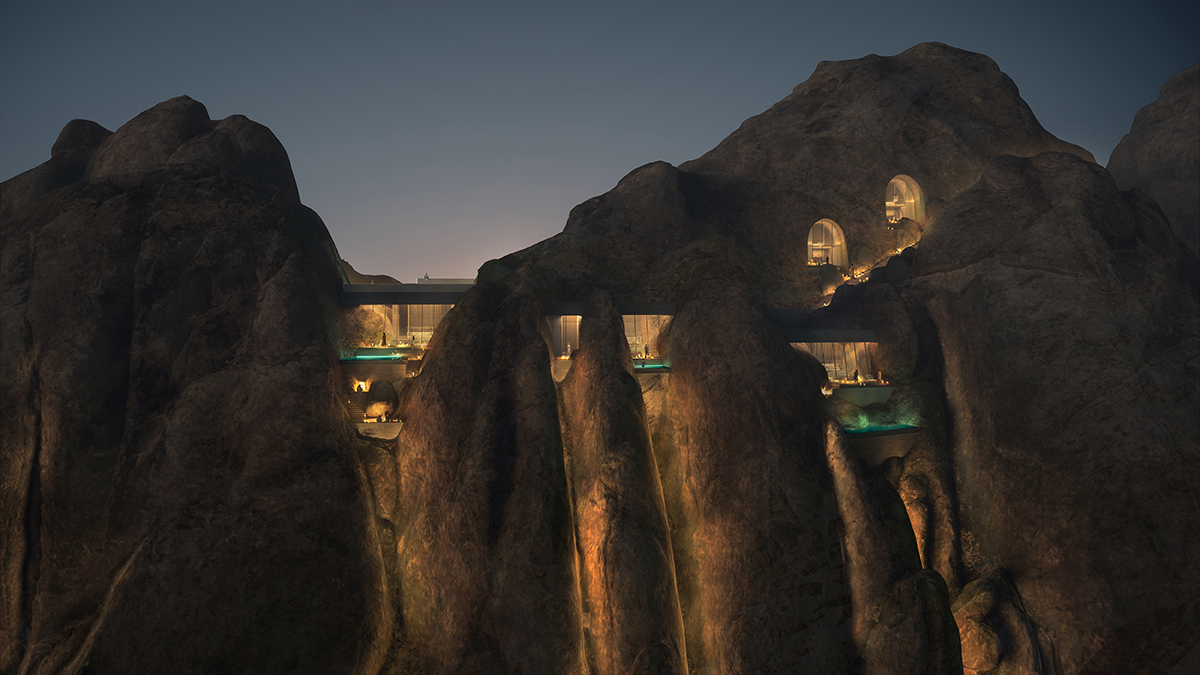
Image © Luxigon
The architectural language of the hotels and villas are formed naturally by using an excavation technique from the rocks. As a common design principle of Oppenheim Architecture by adopting the philosophy of "building with the land, not on the land," the structures are designed in the same principle.
Guests will enter the resort through a hidden valley nestled between the mountains. Creating 60 keys in total, the structures are located amongst the vista, with architecture fully integrated into the rock to preserve its striking silhouette.
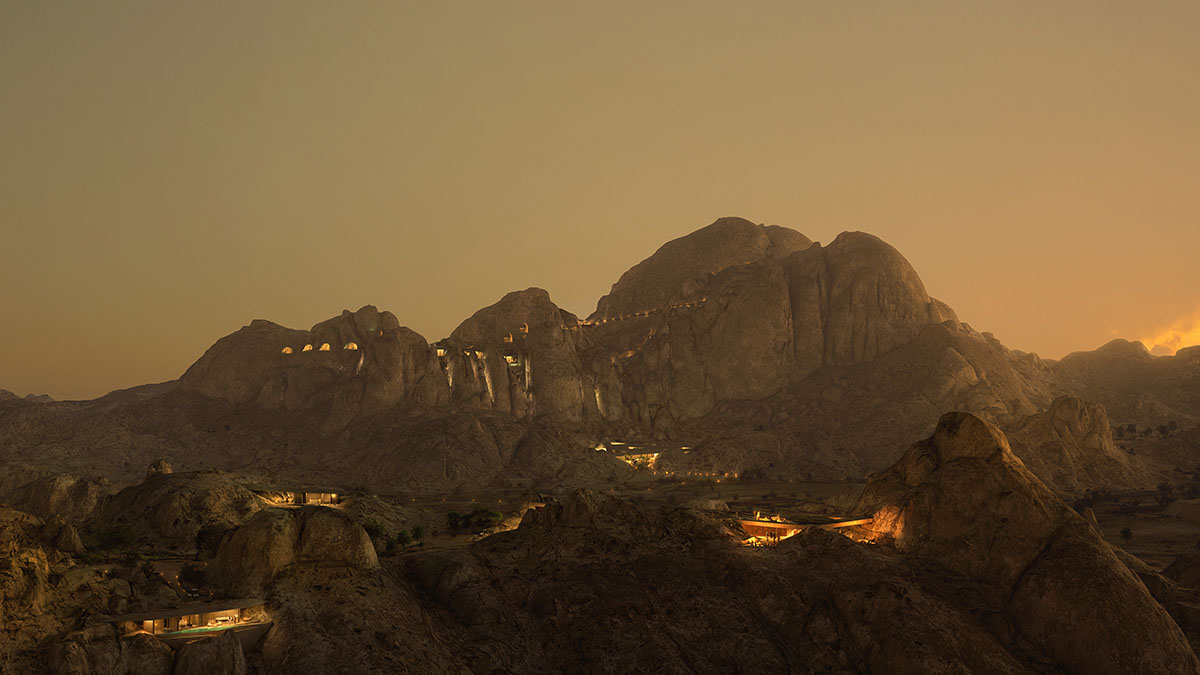
Image © Luxigon
Desert Rock will offer a range of accommodation for its guests, from ground level dwellings to crevice hotel suites midway up the mountain, while a select number of excavated rooms will be placed within the rock massif itself.
"To provide undisrupted views across the landscape, most roads leading into the resort will be pushed to the edge of the main wadi and hidden behind landscape mounds," said Oppenheim Architecture.
"This will also minimize sound and light pollution, allowing guests to fully absorb the dramatic desert landscape," the firm added.
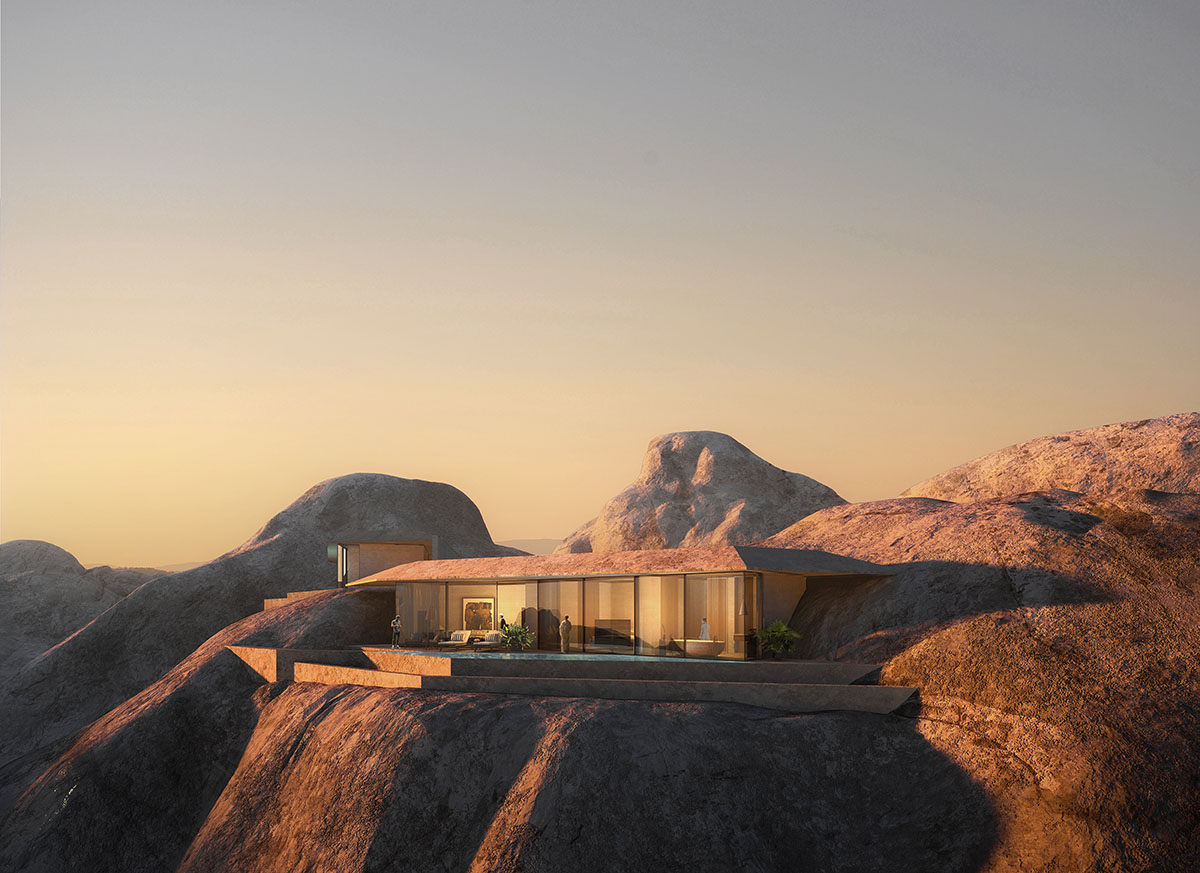
Image © Luxigon
The new resort will also feature state-of-the-art facilities, including a world-class spa and fitness centre, remote destination dining areas as well as a feature lagoon oasis. Guests will be able to hike, use dune buggies, and star gaze as part of the site-wide activities program.
The project also aims to maintain the ancient history of the site by hiring members of the local community to act as stewards of the land and provide educational tours for visitors about the local history of the area.
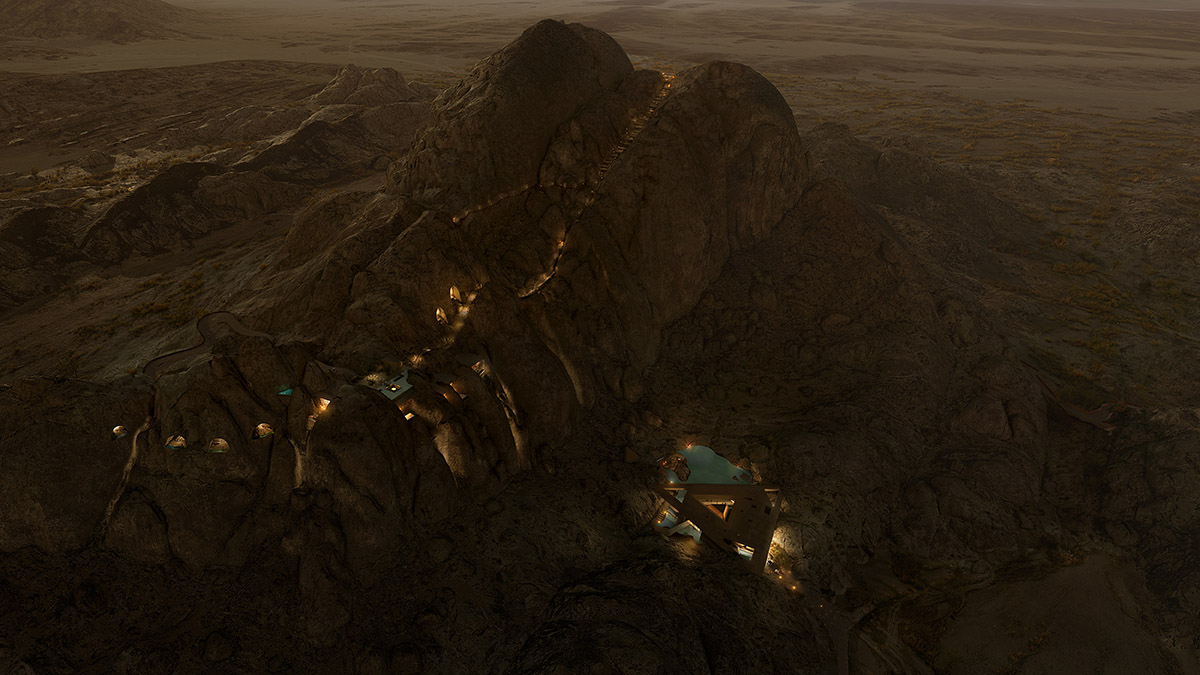
Image © Luxigon
Desert Rock will follow sustainable construction principles
Based on TRSDC’s commitment to regenerative tourism, Oppenheim Architecture targets the highest Leadership in Energy and Environmental Design (LEED) certification level for this project.
To achieve this, the team designed architecture that can reduce energy consumption and regenerate native flora. Water retention and distribution systems will be used throughout the site, with harvested rainwater used to create a more green, flourishing Wadi.
Oppenheim Architecture will excavate materials from the site and will use to create the infrastructure. The team will use stone for interior and exterior walls and floors, while ground stone and existing sand will be used for concrete aggregate, which is the main building material for all the architecture.
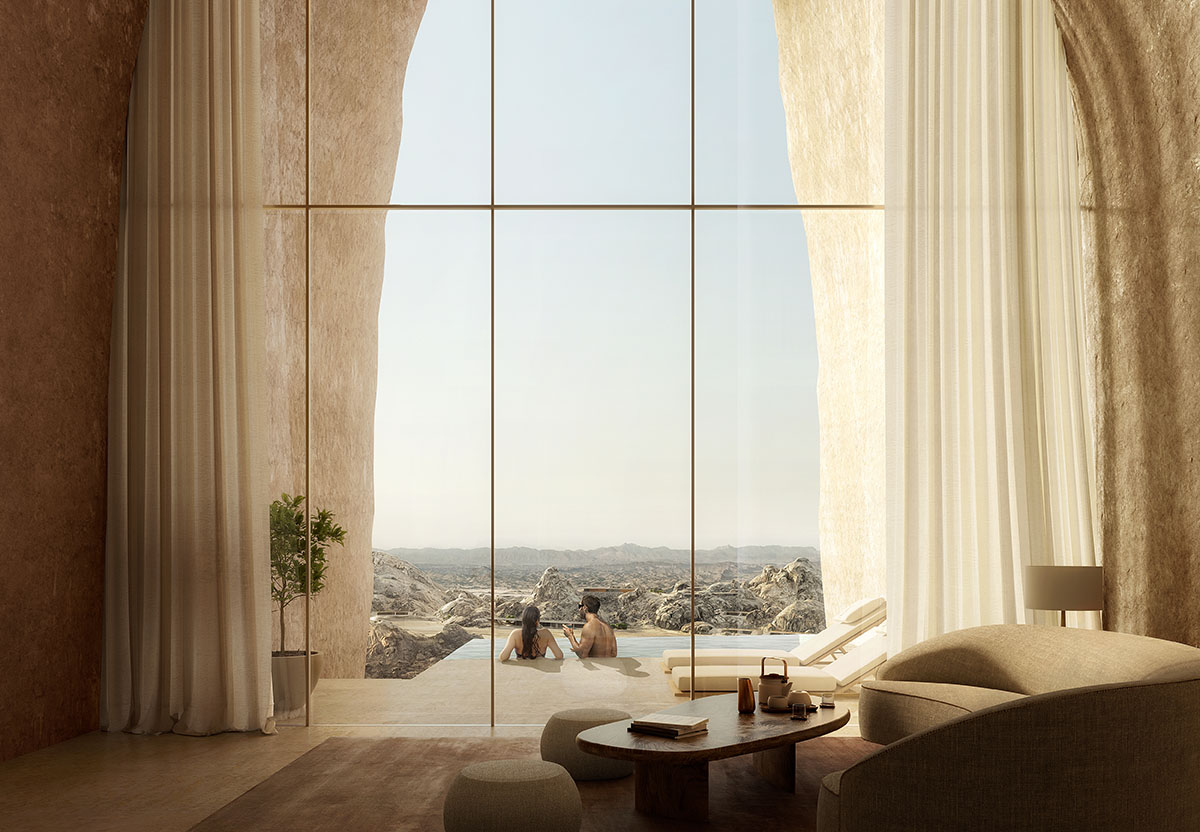
Image © Luxigon
"Desert Rock is one of the most dramatic desert landscapes in the world, which is why we wanted to use the architecture as a way to honor and respect it," said Chad Oppenheim, Founder of Oppenheim Architecture.
"By utilizing natural materials and integrating the resort into the rock, guests can connect physically with the destination and experience Saudi Arabia’s stunning, natural beauty," added Oppenheim.
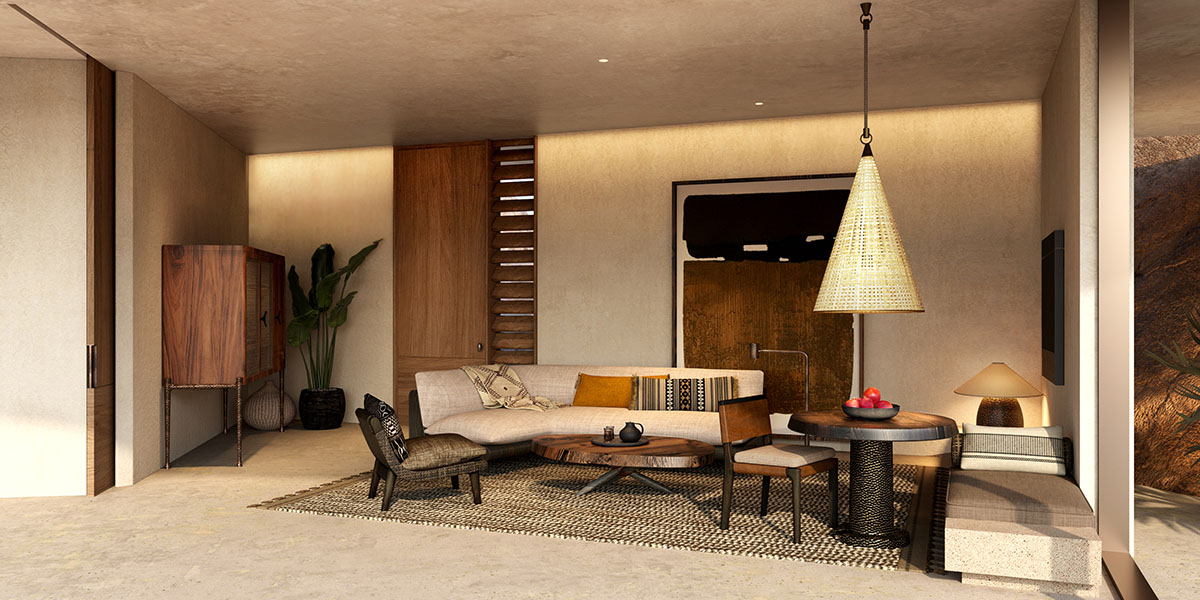
Image © Luxigon
Upon completion in 2030, the TRSDC destination will comprise 50 resorts, offering up to 8,000 hotel rooms and more than 1,000 residential properties across 22 islands and six inland sites. The destination will also include luxury marinas, golf courses, entertainment, leisure facilities and an international airport.
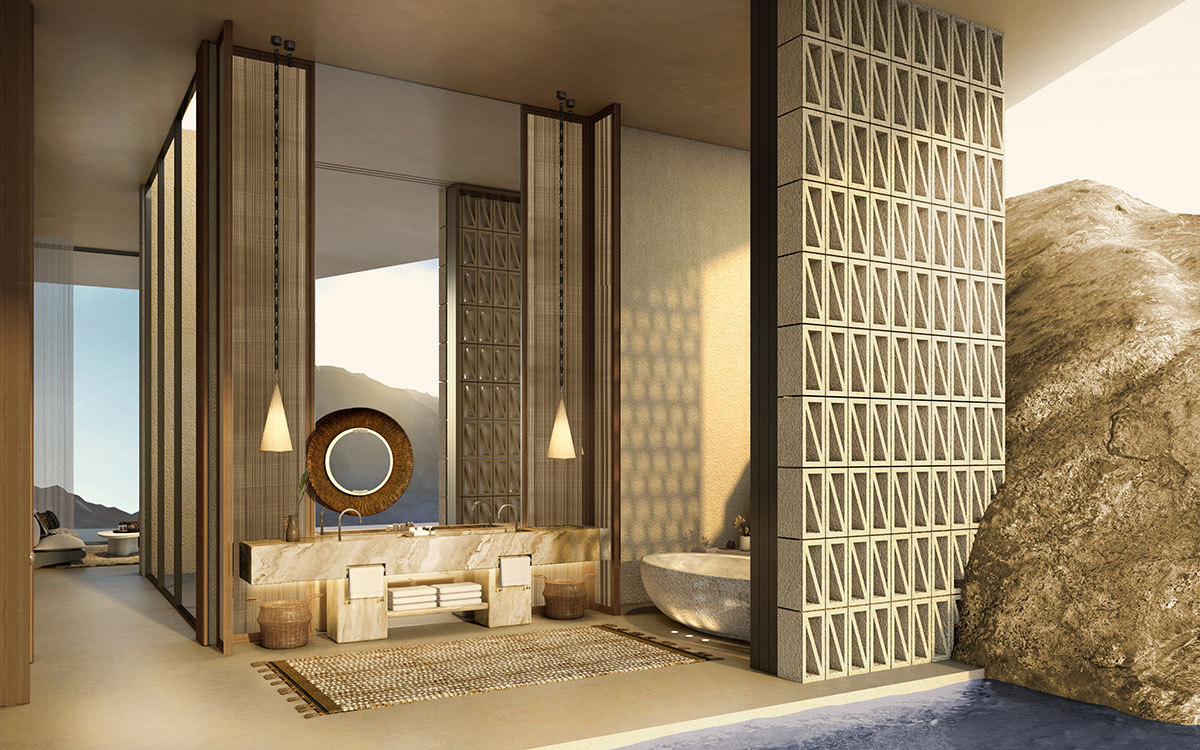
Bed Ensuite. Image courtesy of Oppenheim Architecture
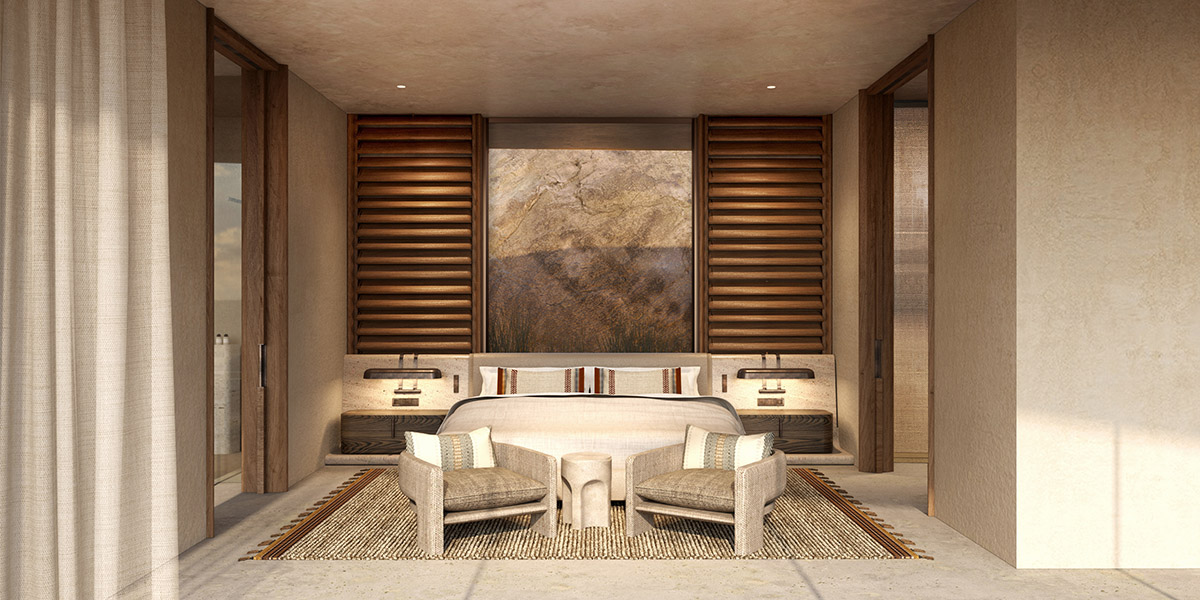 Hanging Valley Bedroom. Image courtesy of Oppenheim Architecture
Hanging Valley Bedroom. Image courtesy of Oppenheim Architecture
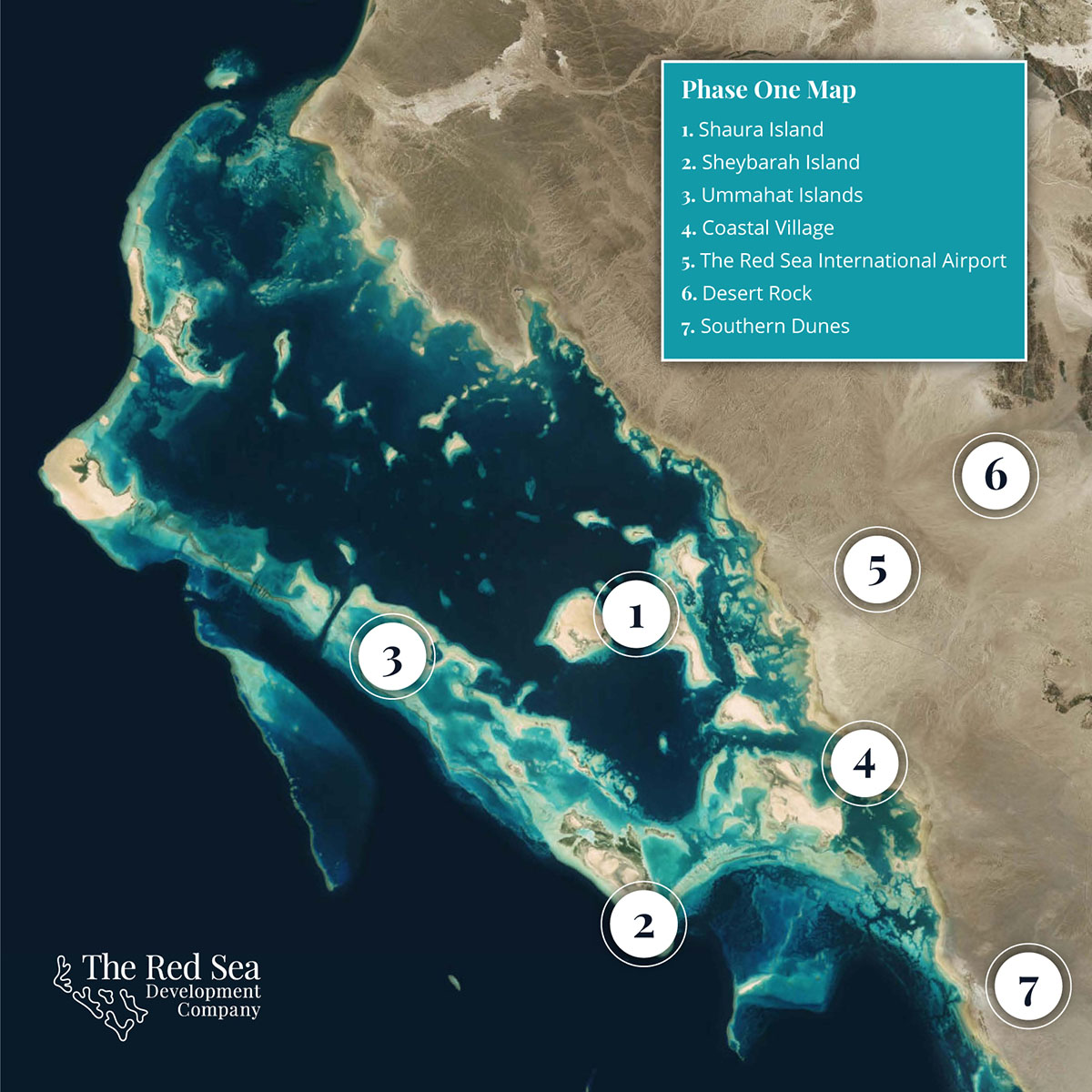
Map
As part of the TRSDC project, Foster + Partners is designing Red Sea International Airport, Southern Dunes Hotel and Coral Bloom Resort on Saudi Arabia's Shurayrah Island. Additional projects can be seen on WAC's Saudi Arabia country page.
Oppenheim Architecture is also designing a new luxury destination on Albania's southern coast. Ayla Golf Academy & Clubhouse on the natural desertscape of Aqaba, Jordan is one of key projects of the studio alongside Muttenz Water Plant in a protected Swiss forest in Muttenz.
Top image © Luxigon
All drawings courtesy of Oppenheim Architecture.
> via Oppenheim Architecture
